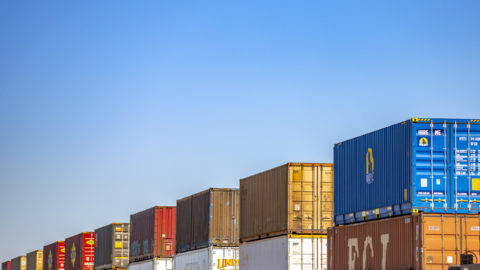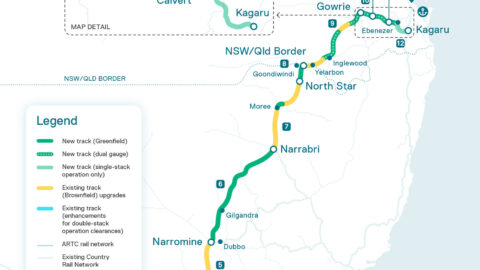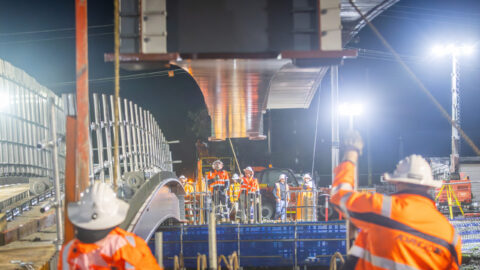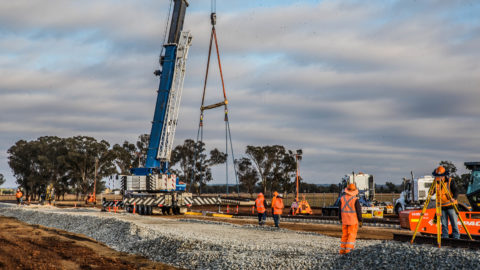Crossing loops and turnouts are essential for managing the flow of trains on single-track railways like Inland Rail.
They allow trains to pass each other, so that multiple trains can operate on a single-track railway safely and efficiently.
How do trains pass each other on a single-track railway?
On single-track rail systems, such as Inland Rail, trains pass each other using crossing loops.
These loops are sections of track that run parallel to the main line, allowing one train to pull onto the crossing loop while the other continues on the main track.
Once the passing train clears the main line, the waiting train re-enters the track and continues its journey.
Crossing loops can also be used for overtaking, where slower trains move into the loop to allow faster trains to pass.
What is a crossing loop or passing loop?
A crossing loop, or passing loop, is a section of rail parallel to the main track. It allows trains travelling in either direction to pass each other safely and can also be used for overtaking.
Turnouts, or switches, connect crossing loops to the main track, enabling trains to enter or exit the loop smoothly.
Watch the video below for details on how crossing loops are used in Inland Rail.
What are the benefits of using crossing loops?
Crossing loops increase capacity and operational efficiency on single-track railways by allowing multiple trains to use the same track.
They are especially helpful when faster trains need to overtake slower ones, ensuring trains stay on schedule and that rail traffic flows smoothly.
Strategic placement of crossing loops removes the need to build dual-track railway (two tracks next to each other, extending along the entire route).
Crossing loops provide a flexible, scalable solution that enables more efficient train operations, while also reducing construction costs, minimising environmental impacts, and ensuring the system is adaptable to future needs.
What are the differences between a crossing loop and a siding?
While both use parallel tracks, crossing loops are focused on maintaining train movement, whereas sidings are temporary holding areas.
Crossing Loop
A crossing loop is primarily designed to keep trains moving by allowing them to pass each other or overtake.
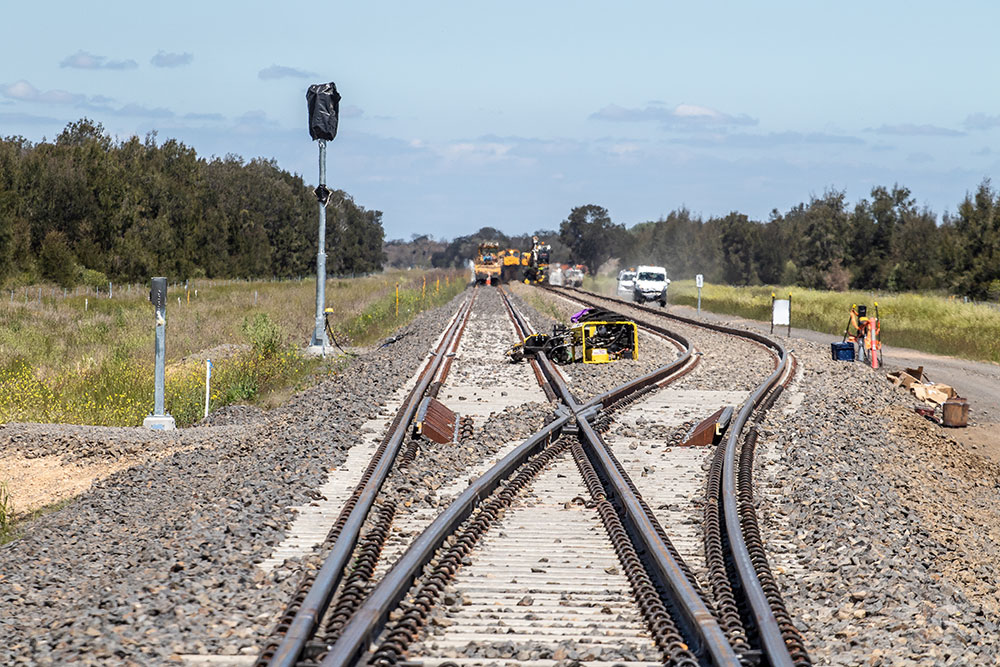
A crossing loop under construction.
Siding
A siding, in contrast, is a track parallel to the main line used for storing trains or handling logistical operations like loading and unloading freight.
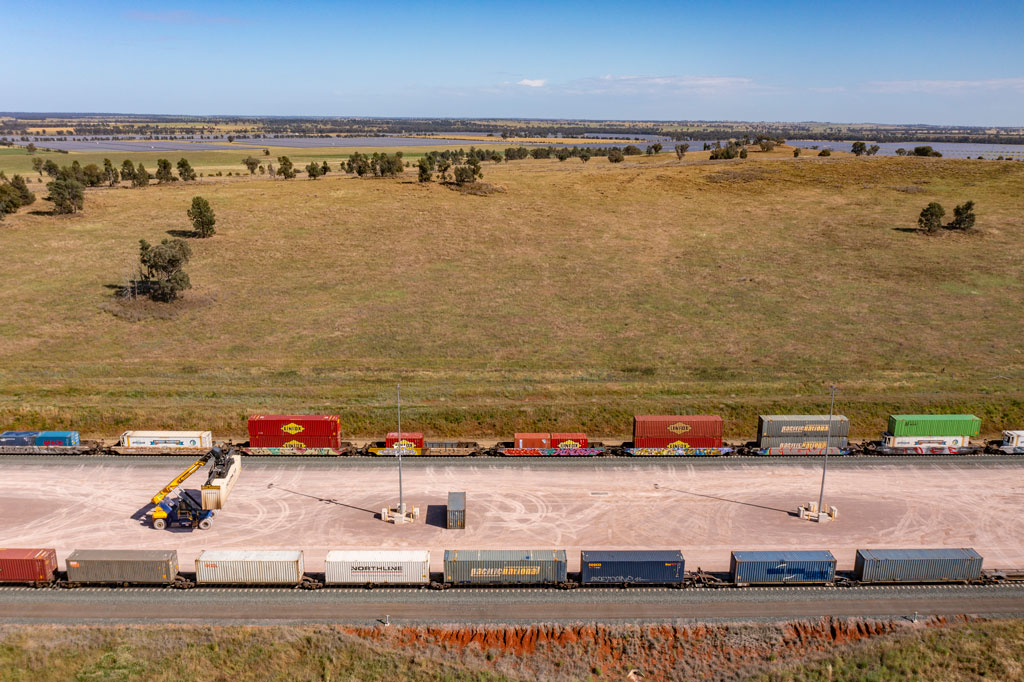
Trains are loaded at a siding.
What is a turnout in rail?
A turnout, or switch, is a mechanical device that connects the main track to the crossing loop, allowing a train to either continue on the main line or divert onto the loop. Turnouts are essential for enabling smooth transitions between tracks without disrupting the flow of rail traffic.
How does a turnout work?
Turnouts operate by shifting switch rails, guiding the train’s wheels from one track to another. These mechanical switches allow trains to change tracks seamlessly, ensuring efficient operation, particularly at junctions or when trains need to enter crossing loops or sidings.
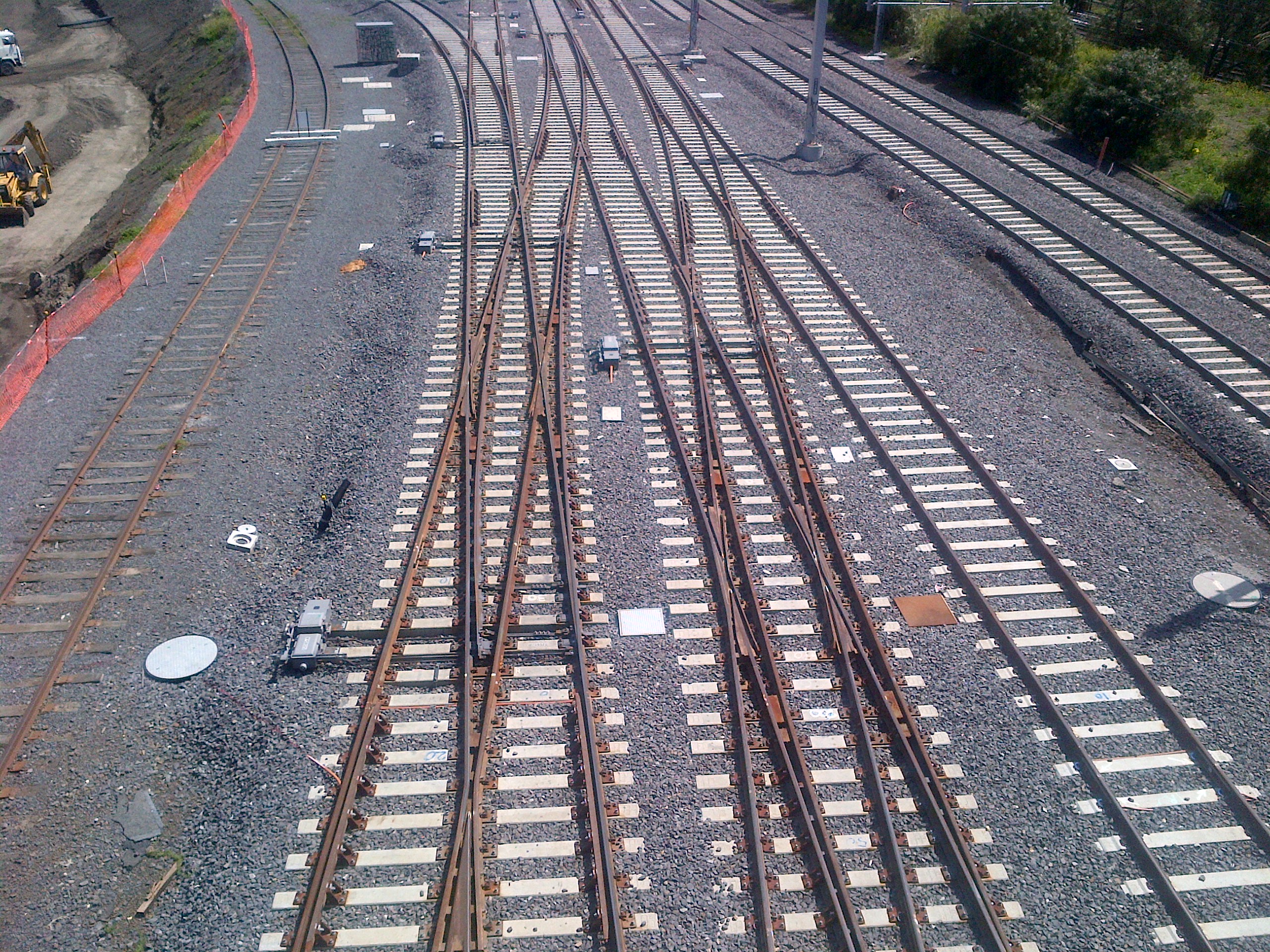
A turnout.
How will Inland Rail use crossing loops?
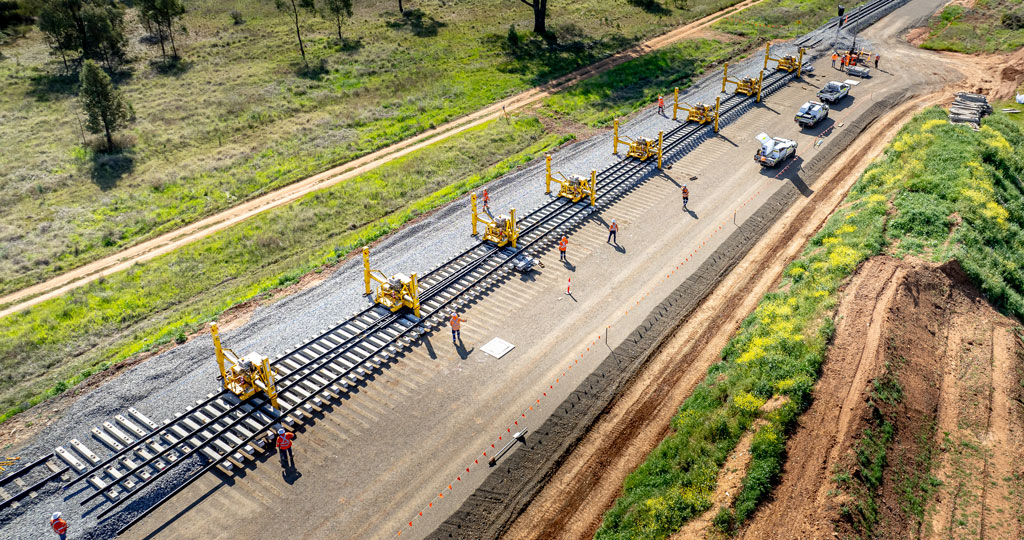
Track and turnouts laying machinery – known as PEMs – work in unison to install rails at Daroobalgie.
Inland Rail will use crossing loops at strategic locations throughout its network to ensure smooth train operations. These loops are critical for allowing the up-to-1.8km long freight trains to pass one another, helping to reduce delays and improve operational efficiency.
Crossing loops will be strategically placed at key locations along the Inland Rail corridor, particularly in areas where train traffic is heaviest.
Several factors influence their placement, including train frequency, operational needs, and the terrain.
By incorporating crossing loops into its design, Inland Rail will be able to handle longer trains, prevent bottlenecks, and maintain a high level of service for its freight operations.
Inland Rail is a 1,600km freight rail line that will connect Melbourne and Brisbane via regional Victoria, New South Wales and Queensland.
